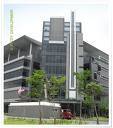More development in store for Petaling Jaya
Before the dust from the FAS field controversy has settled, Petaling Jaya residents could be bracing themselves for more major developments as the site of the former Matsushita factory in SS9 has been earmarked for development.
The 7.95ha of land has been taken out of the free trade zone and the status of the land changed for commercial use.
The proposed development submitted to the Petaling Jaya City Council (MBPJ) includes three blocks of 17-storey serviced apartments, a 16-storey hotel with banquet hall, five blocks of 25- to 31-storey offices, a 20-storey Small Office Home Office (SOHO) block, 18 units of 3½-storey showrooms and 80 units of 4½-storey shop lots.
A development of this density at the junction of the LDP and the Federal Highway could add to the massive traffic jams experienced not only by PJ residents but road users from places like Puchong and Shah Alam.
According to private traffic planning consultant Goh Bok Yen, the development had a sizeable density that could see an additional 63,000 cars per day.
“They must come up with a good traffic dispersal system,” he said.
Goh felt that the conversion of land use was inevitable for urban renewal but must be handled in a careful manner.
“If done on an ad hoc basis, it would upset the road and transport infrastructure. We should look at the overall area, like in Section 13 and have a master plan for the area,” Goh said.
He added that solving the existing problems of traffic congestion should be the main priority.
In the proposed development plans, 4,888 car parks were required but only 4,444 will be allocated.
“The cars could either wait, park outside, or circulate the building. A shortage of car parks is very critical because this is located at the cross point of the busy LDP and the Federal Highway.
“Any shortage of parking spaces in a congested area could lead to more problems,” Goh said.
MBPJ councillor Derek Fernandez, who chaired the objection hearing at the MBPJ headquarters, said that residents who submitted objections had raised certain issues like traffic congestion and parking problems.
“Most of the residents are from the lower-income group and their quality of life is already bad. The proper infrastructure is not in place, the air quality is bad and even the drains there are clogged,” he said.
The houses behind the factory are separated only by a narrow residential road.
A resident, who declined to be named, also said that they were worried about the safety of their houses during the demolition of the factory.
“There would also be pollution when construction starts,” the SS9/15 resident said.
Seri Setia assemblyman Nik Nazmi Nik Ahmad, who was also present at the objection hearing, agreed with the issues brought up by the residents and said that the density of the proposed development was too high.
“What they’re proposing is exceeding what the infrastructure can handle. It’s near the LDP flyover, which is already severely congested,” Nik Nazmi said.
He said that, at present, the residents were already having problems with the heavy traffic on their roads as motorists tried to avoid the jam on the highways.
All-Petaling Jaya Residents’ Association Coalition (APAC) chairman Liew Wei Beng said that the land should not be rezoned before the Petaling Jaya Local Plan 2 (RTPJ2) was gazetted.
“PJ can no longer sustain development of such a high density. The MBPJ should work on improving the infrastructure before they can even consider such applications,” Liew said.
He added that it was not viable to have apartments at such a critical area of the LDP.
“Take a look outside any condominium in PJ and you would see cars parked along the road. Is this the image we want for the city?
“The MBPJ needs to seriously consider increasing the ratio of required car parks to three bays per unit,” Liew said.
Selangor local government, research and studies committee chairman Ronnie Liu said he had no knowledge of any approval for the land conversion.
“When it comes to us, we’ll study the proposal,” he said.
Source: The Star February 16, 2009
.jpg)

No comments:
Post a Comment